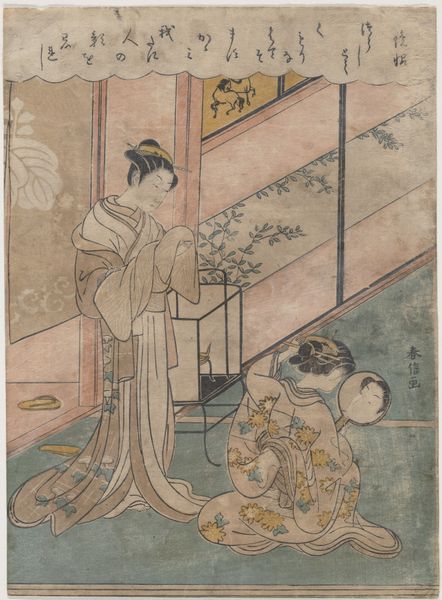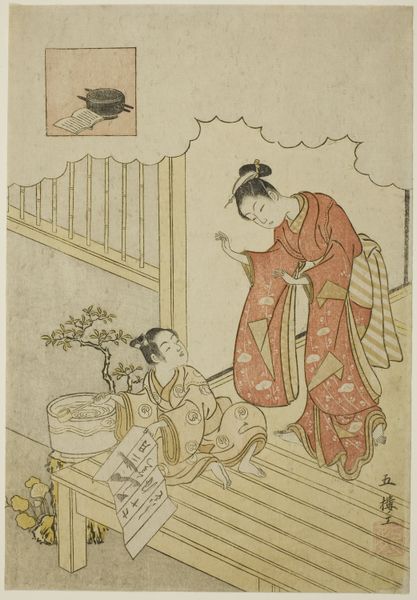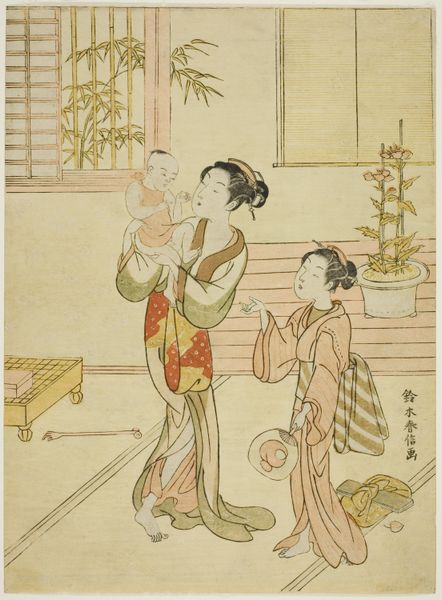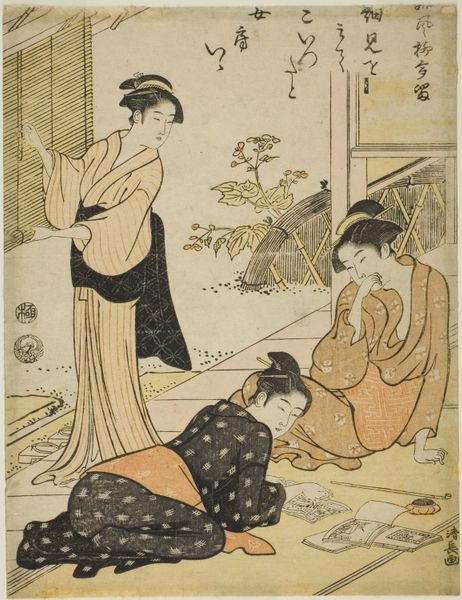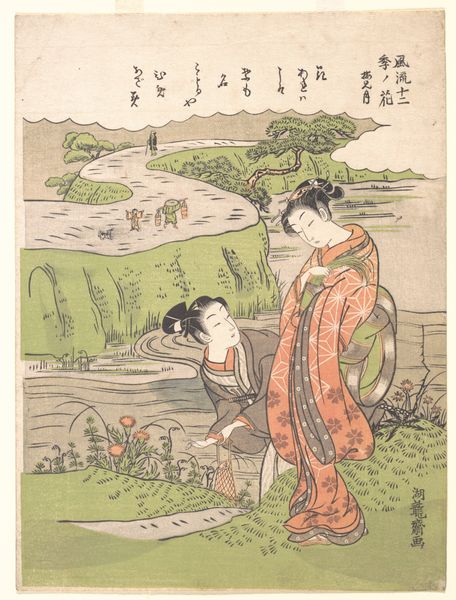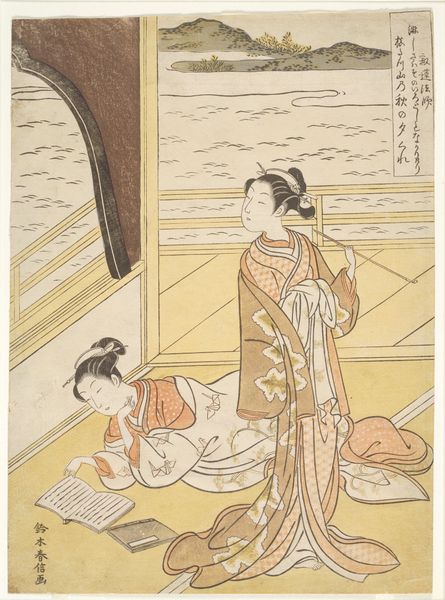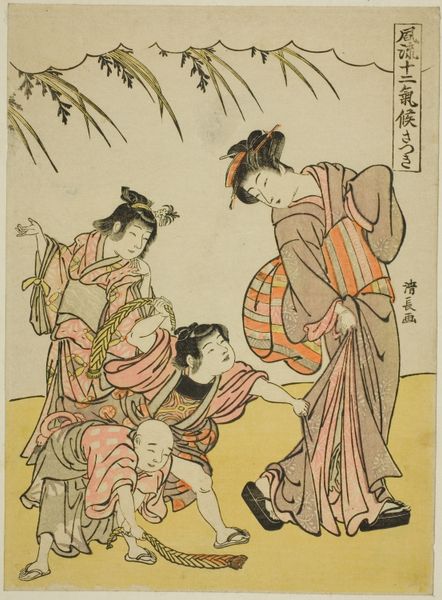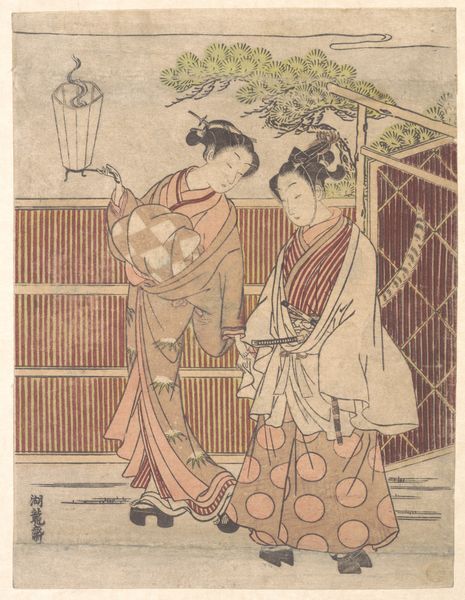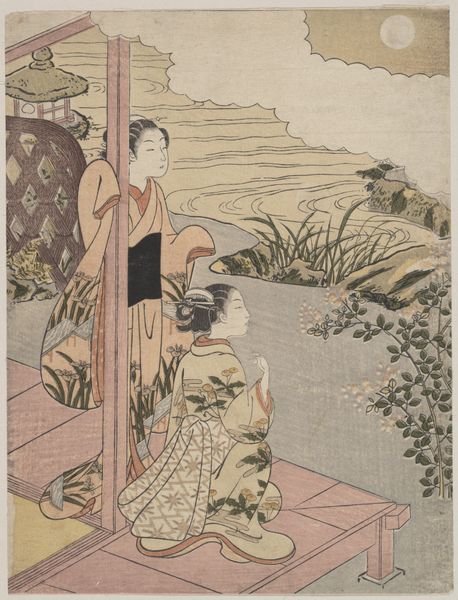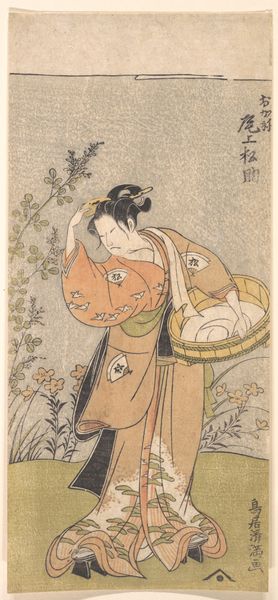
Poem by Fujiwara no Motozane (ca. 860) from the Series Thirty-Six Poets 1758 - 1778
0:00
0:00
#
narrative-art
# print
#
asian-art
#
ukiyo-e
#
figuration
Dimensions: Image: 10 7/8 x 8 1/8 in. (27.6 x 20.6 cm)
Copyright: Public Domain
Curator: Let's turn our attention to "Poem by Fujiwara no Motozane from the Series Thirty-Six Poets" a color woodblock print crafted sometime between 1758 and 1778 by Suzuki Harunobu. Editor: Immediately striking is the tenderness of the scene. The pale hues and soft lines give it an almost ethereal quality. The composition is simple yet balanced. Curator: This print belongs to the Ukiyo-e tradition, which translates to "pictures of the floating world." Such artworks often depicted everyday life and ephemeral pleasures, imbued with symbolic meaning. Notice the woman, likely a mother, and a child. Consider the unspoken narrative. Editor: Indeed. The relationship between the figures is visually reinforced. Note the mirroring in their gestures – outstretched hands and slightly bowed heads. The lines of their garments, particularly the woman’s kimono, guide the eye toward the lower left where a bird awaits. It's masterful direction. Curator: Birds in Japanese art can represent freedom or act as messengers between worlds. Here, its presence introduces an element of playful anticipation, mirroring perhaps the spirit of Motozane's poem. The poem, inscribed above, adds another layer to this intricate visual tableau. Editor: The inscription creates visual harmony with the lines of the architectural elements and the pine branches, creating an immersive plane that plays with traditional perspective. It integrates the written word beautifully into the overall pictorial plane. But I’m curious about the empty washtub and clothes-drying rack. Curator: Consider the deeper connotations: The image could signal the passing of time or domestic rituals which give form to life. It is more than a mere snapshot, it offers viewers a pathway to experience the artist’s time as it moves toward their own present moment. Editor: The longer one looks, the richer the work reveals itself to be. The gentle colour scheme initially projected relaxation. As the symbolic context emerges the picture evokes an elegiac consideration for the transient joys of existence. Curator: Precisely! What began as a scene of simple domesticity becomes a contemplation on nature, poetry, and the beauty of everyday moments. A poignant testament to the human condition, even centuries later.
Comments
No comments
Be the first to comment and join the conversation on the ultimate creative platform.
